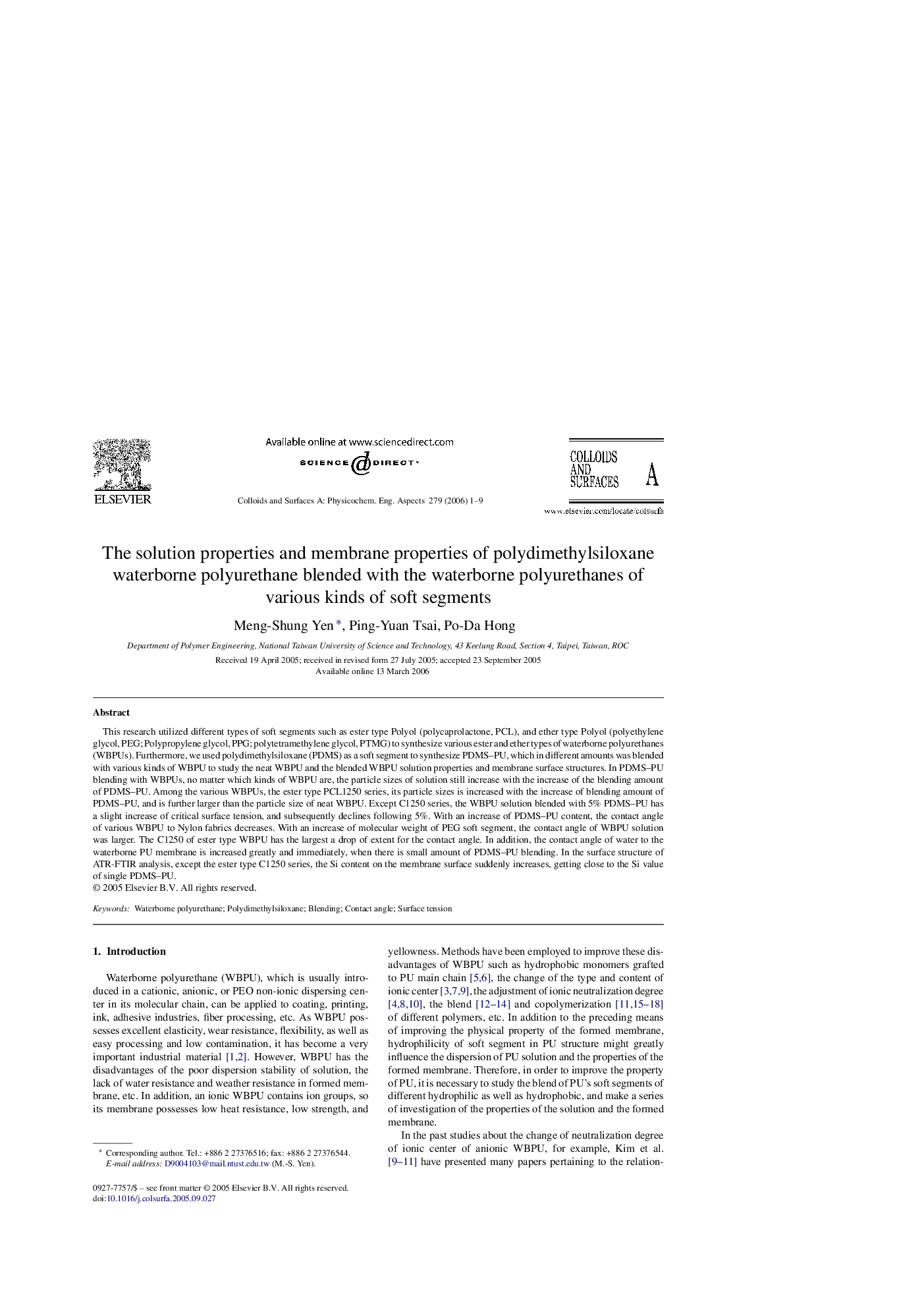| Article ID | Journal | Published Year | Pages | File Type |
|---|---|---|---|---|
| 598422 | Colloids and Surfaces A: Physicochemical and Engineering Aspects | 2006 | 9 Pages |
This research utilized different types of soft segments such as ester type Polyol (polycaprolactone, PCL), and ether type Polyol (polyethylene glycol, PEG; Polypropylene glycol, PPG; polytetramethylene glycol, PTMG) to synthesize various ester and ether types of waterborne polyurethanes (WBPUs). Furthermore, we used polydimethylsiloxane (PDMS) as a soft segment to synthesize PDMS–PU, which in different amounts was blended with various kinds of WBPU to study the neat WBPU and the blended WBPU solution properties and membrane surface structures. In PDMS–PU blending with WBPUs, no matter which kinds of WBPU are, the particle sizes of solution still increase with the increase of the blending amount of PDMS–PU. Among the various WBPUs, the ester type PCL1250 series, its particle sizes is increased with the increase of blending amount of PDMS–PU, and is further larger than the particle size of neat WBPU. Except C1250 series, the WBPU solution blended with 5% PDMS–PU has a slight increase of critical surface tension, and subsequently declines following 5%. With an increase of PDMS–PU content, the contact angle of various WBPU to Nylon fabrics decreases. With an increase of molecular weight of PEG soft segment, the contact angle of WBPU solution was larger. The C1250 of ester type WBPU has the largest a drop of extent for the contact angle. In addition, the contact angle of water to the waterborne PU membrane is increased greatly and immediately, when there is small amount of PDMS–PU blending. In the surface structure of ATR-FTIR analysis, except the ester type C1250 series, the Si content on the membrane surface suddenly increases, getting close to the Si value of single PDMS–PU.
